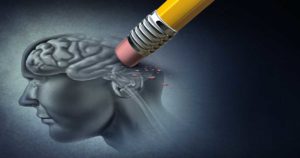Please note that this is not a Suboxone endorsement or advertisement. This author simply experiences a number of clients that have little to no understanding of the available treatment aids that are accessible and wishes to be informative for those seeking suboxone in St Louis or Kansas City, Missouri. Suboxone is the commonly used term for various buprenorphine/naloxone products, such as Zubsolv, Bunivail, Suboxone, and others.
What’s the big deal about Suboxone in St. Louis & Kansas City, Missouri? What does Suboxone do? Why do some individuals feel Suboxone has an advantage over other similar pharmaceuticals? Suboxone comes in both a sublingual tablet and film, while the film is becoming the mainstream delivery mechanism. Suboxone is composed of 8 mg buprenorphine and 2 mg naloxone and a variety of other doses with similar ratios.
Buprenorphine is a partial agonist for dopamine whereas naloxone is a pure antagonist. The two parts have opposite functions; buprenorphine (a partial agonist for dopamine) acting to establish homeostasis in the absence of opiates or heroin and naloxone decreasing the risks for abuse of buprenorphine.
The fact that buprenorphine acts as a partial agonist for dopamine allows physicians to keep their clients from experiencing withdrawal symptoms associated with opiate dependence while decreasing the likelihood that those seeking such pharmaceuticals are abusing the substance. buprenorphine is being used as both an agent in detox protocols, as well as a maintenance aid for long-term treatment combined with addiction therapy.
Individuals who are involved in maintenance with suboxone in St Louis and Kansas City would experience no effects from opiates due to the higher affinity of buprenorphine acting on the receptors. Opiates introduced into the system would not be able to bind to receptor sites. Because of this higher affinity, lower levels can be used compared to the protocol used by many methadone clinics; since that protocol utilizes the principle of maintaining a high enough dose that would limit illicit drugs effects on the client.
Heroin and opiate detox programs utilize buprenorphine, especially in the outpatient setting, since the chemical buprenorphine decreases the likelihood of relapse and naloxone the likelihood of tamper. buprenorphine, in the detox program, can help minimize the effects of withdrawal over the duration of treatment. Many of these programs will put the client on Naltrexone upon completion of the detox to eliminate the individual’s ability to use opiates and/or opioids.
Naltrexone and Naloxone are very similar compounds that differ in their half-life or the amount of time that the chemical stays within the client’s system. Vivitrol® is now being used to deliver this pure antagonist that blocks the effects of heroin, opiate, and opioids. This is done by a polymer compound that contains Naltrexone breaking down in the blood and slowly releasing the chemical.
Whatever the program, buprenorphine has been proven effective in a multitude of treatment protocols and is a beneficial tool in opiate addiction treatment. It is important to note however that Suboxone and medications alone have not been proven to be as successful as compared to programs that combine medications, mental health care, and counseling. When choosing your addiction treatment to be sure to do your research and choose a comprehensive program that treats you where you are at, with a comprehensive model.
Contact our rehab center to learn more about suboxone or access to suboxone in Kansas City & St Louis , MO.













